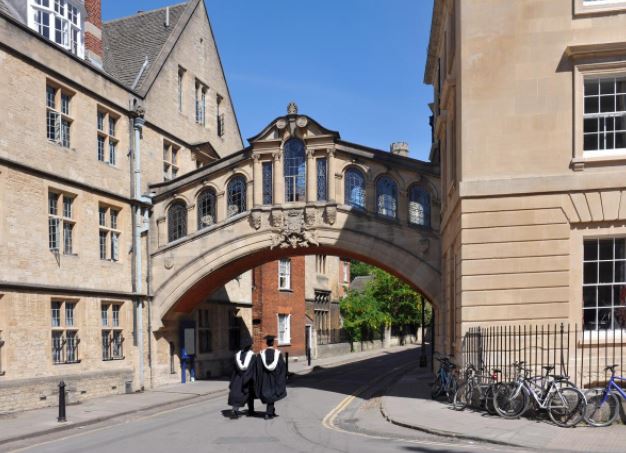Foreign university branch campuses in India – Prospects and challenges

From Current Affairs Notes for UPSC » Editorials & In-depths » This topic
IAS EXPRESS Vs UPSC Prelims 2024: 85+ questions reflected
Context: India, after half a century of keeping its higher education doors closed to foreigners, is on the cusp of opening itself to the world. The traditional orientation to swadeshi that has characterized much of Indian thinking, at least in higher education, is changing.

Why will it be worthwhile for policymakers to look at the experience of other countries for positive and negative lessons?
National Education Policy (NEP) 2020 and Internationalization:
- The wide-ranging National Education Policy (NEP) 2020 promises higher education reforms in many areas, and internationalization is prominent among them.
To strengthen India’s soft power:
- Among the underlying ideas is to strengthen India’s “soft power” through higher education collaboration, bringing new ideas and institutions from abroad to stimulate reform and show “best practice”, and in general to ensure that Indian higher education, for the first time, is a global player.
Some relevant examples in this new thinking
The Gujarat Biotechnology University:
- The Gujarat Biotechnology University is an example of new models of international academic partnerships emerging in India.
- It was established by the Department of Science and Technology of the Government of Gujarat in partnership with the University of Edinburgh, which assists the Gujarat Biotechnology University in developing strategies with regard to teaching, learning, research and innovation, and quality assurance, among others.
- This is a unique model in the present Indian academic context as there are many regulatory hurdles that still exist in the country with regard to international academic partnerships, which include the operation of international branch campuses.
Why the new thinking offers an opportunity to India?
India: An emerging higher education power
- India is seen around the world as an important country and an emerging higher education power.
- It is the world’s second-largest “exporter” of students, with 4,61,792 students studying abroad (according to the UNESCO Institute for Statistics).
- India has the world’s second-largest higher education system.
The eagerness of foreign countries and universities:
- Foreign countries and universities will be eager to establish a “beachhead” in India and are interested in providing opportunities for home campus students to learn about Indian business, society, and culture to participate in growing trade and other relations.
Prospects offered by the new thinking
Encourages competition:
- International branch campuses, if allowed, could function as a structurally different variant of India’s private university sector.
- The establishment of foreign university branch campuses would encourage competition mainly between existing private universities and foreign branch institutions but would have less impact on the public universities.
Brings new ideas:
- Branch campuses, if effectively managed, could bring much needed new ideas about curriculum, pedagogy, and governance to Indian higher education — they could be a kind of educational laboratory.
Challenges to the new thinking
Difficulties to attract foreign universities:
- It will not be easy to attract foreign universities to India and even more difficult to create the conditions for them to flourish.
- Many of those top universities are already fully engaged overseas and would likely require incentives to set up in India.
The difficulty in preventing profit-seekers:
- Universities around the world that have academic specializations focusing on India, that already have research or faculty ties in the country, or that have Non-Resident Indians (NRI) in senior management positions may be easier to attract.
- What is most important is to prevent profit-seekers from entering the Indian market and to encourage foreign institutions with innovative educational ideas and a long-term commitment.
Need for significant incentives:
- Many host countries have provided significant incentives, including building facilities and providing the necessary infrastructure.
- Foreign universities are highly unlikely to invest significant funds upfront.
Multiple regulators:
- A big challenge will be India’s “well-known” bureaucracy, especially the multiple regulators.
Recent initiatives
- There has been modest growth in various forms of partnerships between Indian and foreign institutions.
- An example is the Melbourne-India Postgraduate Academy (MIPA). It is a joint initiative of the Indian Institute of Science Bangalore, the Indian Institute of Technology Madras, the Indian Institute of Technology Kanpur and the Indian Institute of Technology Kharagpur with the University of Melbourne.
- These partnerships suggest that India could offer opportunities for international branch campuses as well.
Way forward
- After examining national experiences elsewhere, clear policies can be implemented that may be attractive to foreign universities.
- Once policies are in place, the key to success will be relationships among universities.
Practice Question for Mains
- The traditional orientation to swadeshi that has characterized much of Indian thinking, at least in higher education, is changing. Examine. (250 Words, 15 Marks).
If you like this post, please share your feedback in the comments section below so that we will upload more posts like this.

